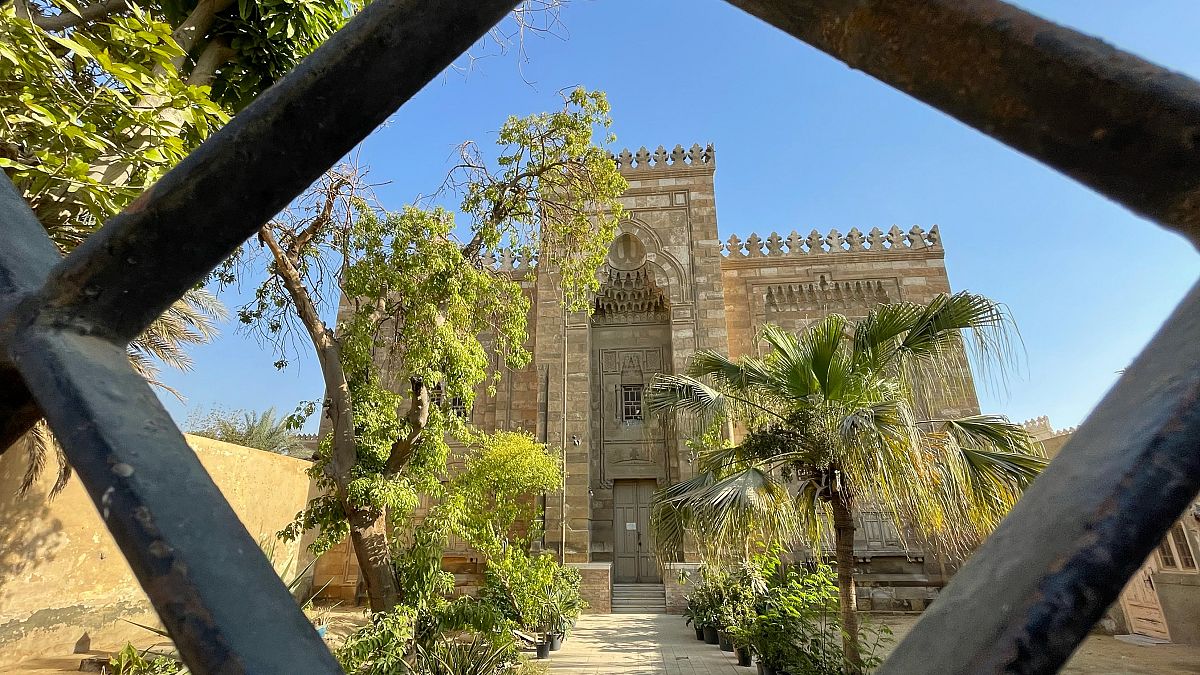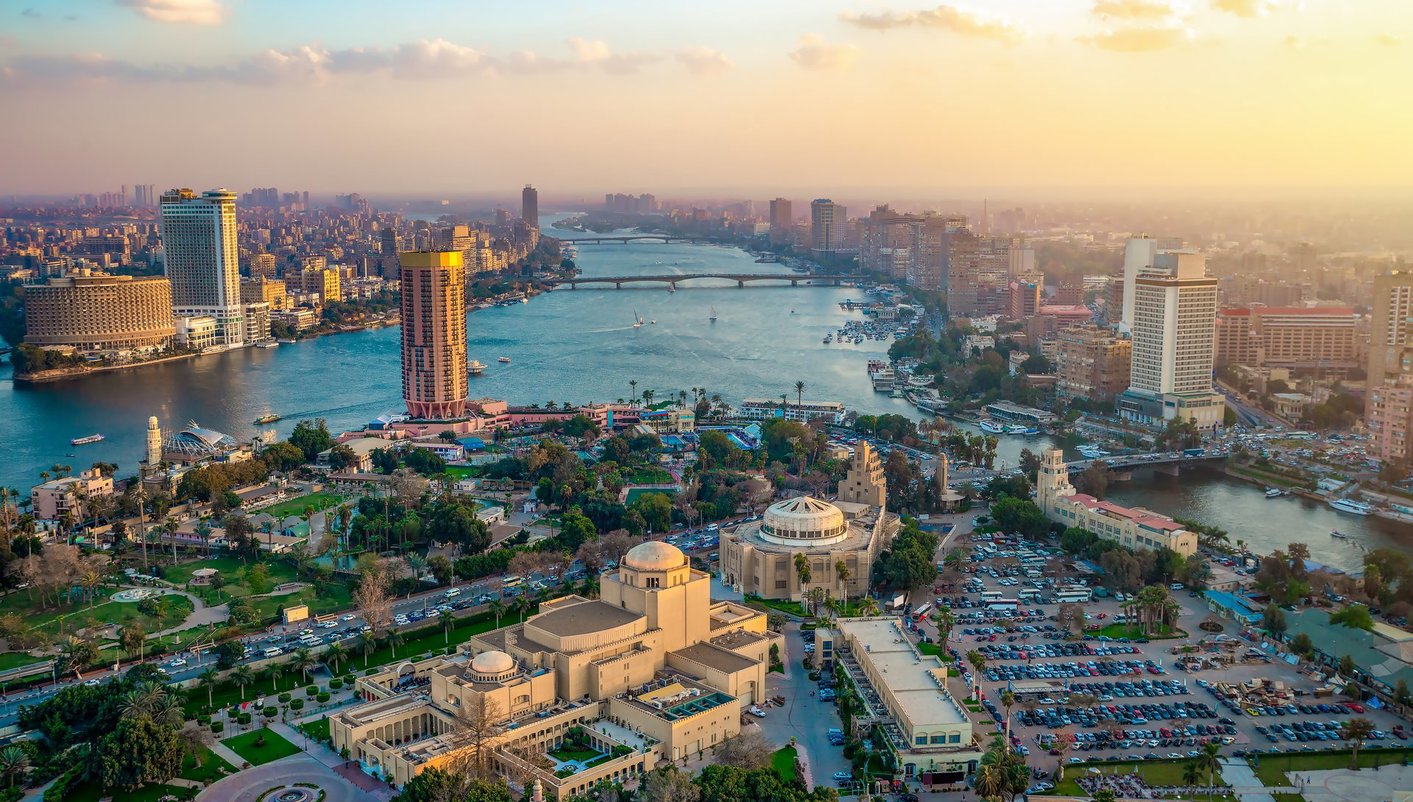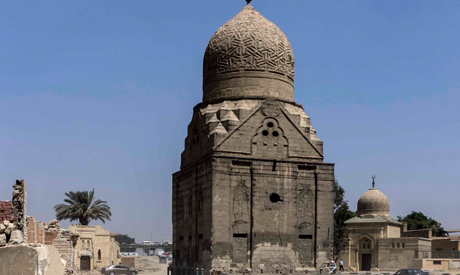Walk Where Pharaohs Dreamed: Explore Cairo's City of the Dead

Cairo's City of the Dead, also known as Al-Qarafa, is a fascinating and unique destination that provides an insight into Egypt's rich history and cultural heritage. This vast necropolis, spanning over 6 miles, is a city within a city, housing thousands of tombs and mausoleums dating back centuries. This blog will explore an overview of Cairo's City of the Dead and dive into its historical and cultural significance.
Overview of Cairo's City of the Dead
- Located in the eastern part of Cairo, the City of the Dead is one of the largest cemeteries in the world.
- The necropolis is divided into two main sections, the Northern Cemetery and the Southern Cemetery, with numerous neighborhoods and streets within each.
- The architecture in the City of the Dead ranges from simple mud-brick tombs to grand mausoleums adorned with intricate carvings and decorations.
- Many of the tombs have been converted into homes, where families continue to reside among the resting places of their ancestors.
- The City of the Dead is also home to several important religious and historical sites, including the Mosque of Ibn Tulun and the Al-Rifa'i Mosque.
The historical significance and cultural importance
- The City of the Dead has been used as a burial ground since ancient times, with tombs dating back to the Islamic era, as well as remnants of earlier periods, including Roman and Coptic.
- It is considered a sacred place by Egyptians, as it houses the graves of many prominent figures from their history, including religious leaders, scholars, and rulers.
- The necropolis also serves as a testament to the evolution of architectural styles throughout the centuries, showcasing the influences of various civilizations.
- The City of the Dead has become a symbol of Cairo's complex relationship with its past, as it continues to be a functioning burial ground while coexisting with a living community.
- Visiting the City of the Dead offers an opportunity to understand and appreciate the cultural and religious practices of the Egyptian people.
The City of the Dead in Cairo is a captivating destination that provides a glimpse into the historical and cultural tapestry of Egypt. Its unique blend of architecture, history, and living community make it a must-visit for those interested in exploring the diverse heritage of this fascinating city.
History of Cairo's City of the Dead
Origins and development of the necropolis
- The City of the Dead, one of the largest cemeteries in the world, is located in the eastern part of Cairo.
- Its origins can be traced back to ancient times, with tombs dating from the Islamic era, as well as remnants from earlier periods, such as the Roman and Coptic civilizations.
- Over time, the necropolis expanded and developed into two main sections: The Northern Cemetery and the Southern Cemetery.
- Each section consists of numerous neighborhoods and streets, forming a complex network within the City of the Dead.
Architectural styles and tombs
- The architecture in the City of the Dead showcases a wide range of styles, from simple mud-brick tombs to grand mausoleums adorned with intricate carvings and decorations.
- These tombs not only serve as resting places for the deceased but have also been converted into homes where families continue to reside among their ancestors.
- Amidst the tomb-lined streets, significant religious and historical sites can be found, including the Mosque of Ibn Tulun and the Al-Rifa'i Mosque.
- The diverse architectural styles and historical sites within the City of the Dead provide a glimpse into the evolution of Egyptian civilization and its influences from various eras.
Through its rich history and cultural importance, the City of the Dead epitomizes Cairo's complex relationship with its past. It stands as a symbol of the Egyptian people's reverence for their history and showcases the blending of ancient and modern life within a single community.

Exploring the Monuments
Welcome to the fascinating world of Cairo's City of the Dead! In this section, we will take a closer look at the stunning monuments that make up this incredible necropolis. Get ready to step back in time as we uncover the stories behind these ancient tombs and mausoleums.
Prominent tombs and mausoleums
- Venture through the narrow streets of the City of the Dead, and you'll come across a variety of tombs and mausoleums, each with its own unique charm.
- One of the most prominent structures is the Mosque of Ibn Tulun, a masterpiece of Islamic architecture dating back to the 9th century. Its spiral minaret is a captivating sight.
- Another notable monument is the Al-Rifa'i Mosque, known for its grandeur and intricate design. It houses the final resting place of numerous members of the Egyptian royal family.
- As you explore further, you'll encounter smaller tombs adorned with beautiful carvings and decorations, showcasing the artistry of past generations.
- From modest mud-brick structures to elaborate marble mausoleums, the architectural styles found in the City of the Dead are a testament to the diverse influences that have shaped Egypt's history.
Notable residents and their legacies
Behind every tomb in the City of the Dead lies a story, and many of these stories are intertwined with the legacies of influential figures from Egyptian history.
- One such individual is Imam Shafi'i, a renowned Islamic jurist and theologian whose mausoleum attracts visitors from far and wide.
- You'll also find the tombs of politicians, scholars, and artists who played pivotal roles in shaping Egyptian society and whose lasting contributions are still celebrated today.
- However, the City of the Dead isn't just a resting place for the deceased. It's a living community where families have adapted these tombs into homes, preserving a deep connection with their ancestors.
As you navigate the City of the Dead, you'll witness the delicate balance between past and present, tradition and modernity. The monuments here not only serve as reminders of Egypt's rich history but also as a testament to the resilience and reverence of its people.

Islamic Architecture in the City of the Dead
Distinctive features and designs
- Venture through the narrow streets of the City of the Dead, and you'll come across a variety of tombs and mausoleums, each with its own unique charm.
- One of the most prominent structures is the Mosque of Ibn Tulun, a masterpiece of Islamic architecture dating back to the 9th century. Its spiral minaret is a captivating sight.
- Another notable monument is the Al-Rifa'i Mosque, known for its grandeur and intricate design. It houses the final resting place of numerous members of the Egyptian royal family.
- As you explore further, you'll encounter smaller tombs adorned with beautiful carvings and decorations, showcasing the artistry of past generations.
- From modest mud-brick structures to elaborate marble mausoleums, the architectural styles found in the City of the Dead are a testament to the diverse influences that have shaped Egypt's history.
Influence on religious and cultural practices
- The City of the Dead holds great significance for Islamic religious practices. Many visitors come to pay their respects and seek blessings from the revered figures buried here.
- It is also a place where traditional cultural practices are preserved. Families have transformed these tombs into homes, embracing the connection with their ancestors as an integral part of their daily lives.
- The architecture and design of the tombs and mausoleums have influenced subsequent Islamic structures in Egypt and beyond. The intricate geometric patterns, decorative motifs, and use of local materials are all hallmarks of Islamic architecture.
- The City of the Dead stands as a reminder of the rich heritage and religious traditions that continue to shape modern Egyptian society.
As you navigate the City of the Dead, you'll witness the delicate balance between past and present, tradition and modernity. The monuments here not only serve as reminders of Egypt's rich history but also as a testament to the resilience and reverence of its people.

The Role of Zawiyas and Mosques
Religious spaces and educational centres
- In the City of the Dead, zawiyas and mosques play a crucial role in the religious and cultural life of the community.
- Zawiyas serve as centers of Islamic education and spiritual enlightenment, providing a space for religious study and prayer.
- These religious institutions also offer classes on the Quran, Islamic jurisprudence, and the teachings of the Prophet Muhammad.
- Students from all over Cairo come to these zawiyas to deepen their religious knowledge and understanding.
- The presence of these educational centers showcases the community's commitment to preserving and passing on Islamic traditions.
Importance in the local community
- Zawiyas and mosques are not only places of worship but also serve as community centres.
- They provide a gathering place for residents, fostering a sense of unity and solidarity among the people of the City of the Dead.
- These religious spaces host various social activities such as wedding ceremonies, communal meals, and charitable events.
- The local community relies on these institutions for guidance, support, and spiritual comfort.
- The imams and religious leaders in the City of the Dead play a significant role in advising and guiding the residents in matters of religion, culture, and daily life.
The zawiyas and mosques of the City of the Dead serve as more than just religious spaces; they are essential pillars of the community. They provide a place for education, spiritual growth, and a sense of belonging. Through their teachings and activities, these institutions contribute to the preservation of Islamic traditions and the cultural vibrancy of the City of the Dead.

Conservation Efforts in the City of the Dead
Preservation initiatives and challenges
- As a historically significant area, the City of the Dead has seen various conservation initiatives aimed at preserving its architectural heritage and cultural value.
- Organizations such as the Ministry of Antiquities and the Supreme Council of Antiquities have been actively involved in protecting the area's rich history.
- However, the preservation efforts face numerous challenges, including limited resources, lack of awareness, and encroachments on historic sites.
- The overcrowded nature of the cemetery also poses challenges, as it makes it difficult to carry out restoration work without affecting the communities living within the area.
Restoration projects and their impact
- Despite the challenges, several restoration projects have been undertaken in the City of the Dead, aiming to conserve and rehabilitate its historic buildings and tombs.
- These restoration projects not only help preserve the physical structures but also contribute to the revitalization of the community and its cultural identity.
- By restoring the architecture, the projects aim to reinforce the historical significance of the area and enhance its potential as a tourist destination.
- The restoration work also creates job opportunities for the local community, providing economic benefits alongside cultural preservation.
While the City of the Dead faces challenges in preserving its architectural heritage, various initiatives and restoration projects demonstrate a commitment to conserving this unique cultural landscape. By addressing these challenges and continuing with restoration efforts, the community can ensure the sustainability and vibrancy of the City of the Dead for future generations.

Cultural Significance and Tourism
Visiting the City of the Dead as a tourist
- When you visit the City of the Dead, you will be mesmerized by its rich history and architectural beauty. It is a unique destination that offers a glimpse into Egypt's past.
- As a tourist, you can explore the historic tombs, admire the intricate carvings and decorations, and learn about the lives of the people buried there.
- The City of the Dead is not just a cemetery; it is a vibrant community where people still live and work. You can experience the daily life of the residents, interact with them, and gain insights into their traditions and beliefs.
- The best way to explore the area is by taking a guided tour. Local guides can provide valuable information about the history and significance of the different buildings and tombs.
- It is important to respect the sensitivity of the area as a burial ground and follow any rules or guidelines provided by the authorities. Additionally, remember to be mindful of the residents' privacy and seek permission before taking photographs.
Experiencing the local traditions and customs
- One of the highlights of visiting the City of the Dead is experiencing the local traditions and customs. The residents have preserved their cultural heritage and continue to practice age-old traditions.
- You can witness traditional ceremonies and rituals that take place in the cemetery, such as the annual celebrations to honour the deceased. These events offer a unique opportunity to learn about Egyptian customs and beliefs surrounding death and the afterlife.
- The community is known for its craftsmanship, and you can find local artisans selling handmade goods like pottery, textiles, and jewellery. Supporting their businesses not only helps the local economy but also ensures the continuity of these traditional crafts.
- Interacting with the residents, listening to their stories, and participating in their daily activities will give you a deeper understanding of their way of life and the challenges they face living in such a unique setting.
- By experiencing the local traditions and customs, you contribute to the preservation and promotion of the City of the Dead's cultural identity, ensuring that it remains a living heritage for future generations.
Visiting the City of the Dead as a tourist provides a unique opportunity to explore its historical significance, learn about local traditions, and support the community. By approaching your visit with respect and an openness to understanding the lives of the residents, you can contribute to the preservation and sustainability of this remarkable cultural landscape.
